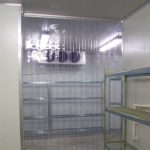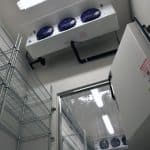Biomedical Freezers and Refrigerators: What are they?
- 24 January 2017
Biomedical freezers and refrigerators are designed to keep blood, cell cultures, and other biomedical samples cool. More than this, they’re built to control multiple environmental domains, including the dryness and sterility levels inside the sealed chamber. In order to accomplish these demanding tasks, state-of-the-art cooling components are incorporated into each unit’s build. That’s a broad strokes description of a complex process, but where are the details? What gifts these clinically rated coolers with their sample-preserving credentials?
The Reliability Factor
Scores of marketable domestic and commercial appliances lower their interior temperatures with great efficiency, but that’s not enough in a clinical setting. The chilled units in a hospital or doctor’s office preserve blood samples, cell cultures, and many other organic specimens. They do so by uniformly cooling these samples. Then, once the samples are properly stored, this temperature setting is precisely maintained. A digitally accurate thermostat takes on this role, but there are also internal monitoring circuits and real-time digital loggers to ensure the environment is reliably maintained.
Cryogenically Efficient
In biomedical storage facilities, cryogenics form the backbone of a new breed of refrigerants, with hydrocarbon-based coolants providing a finitely controllable cooling environment. Blood plasma is stored in clinical freezers, in this manner, as are vaccines and other pharmacological supplies. Meanwhile, the thermodynamic properties of the hydrocarbon medium add potent storage power to laboratory refrigerators. The accessible profile employed here uses glass doors and shelves, but the utilitarian build never undermines the unit’s core capabilities when the cryogenic cooler is flowing.
Environmental Differences
A standard cooler, whether a refrigerator or a freezer, sends the temperature plummeting while other atmospheric attributes escape management. Ice crystals form in standard freezers, for instance. Cellular samples would be destroyed by this crystallization effect, so advanced humidity controls are required. Airborne moisture and surface frost crystals are eliminated by removing condensation from the lab-oriented cooling equation. This degree of environmental control also attends to contamination control. Sterile conditions are kept satisfactorily high by employing easy-wipe stainless steel surfaces and bacteria-resistant coatings.
The insides of biomedical freezers and refrigerators mirror their workplaces. If a laboratory is run under a series of clinical guidelines, then the cooling unit will adopt the same layout. Digital innards, advanced refrigerants, and real-time monitors accommodate this design philosophy. The resulting storage enclosure is then classed as a stasis device, an appliance that suspends cellular activity by keeping the interior at a user-desired setting, one that won’t vary by a single thermal degree or drop of condensed moisture.
Mark Connelly
C&M Coolroom Services
E-mail : markconnelly@cmcoolrooms.com.au
Mobile: 0412 536 315


